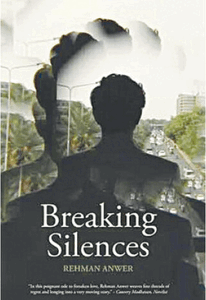
Pakistan-China: All-Weather Strategic Partner
By Dr Rashid Jamal
Loheadab Publications
ISBN 978-969-7504-22-0
194pp.
The flyleaf of Dr Rashid Jamal’s book, Pakistan-China: All-Weather Strategic Partner, has an inscription few Pakistanis can read. It is in Chinese — an intelligent start intended to set the tone for what the book is about: the all-weather relationship between the two neighbours.
However, on the dust cover and on the inside pages a hyphen between ‘Pakistan’ and ‘China’ treats the two as a single noun. So it is “all-weather partner and not partners that one would expect.
Despite changes in the “international and domestic domains,” the author says, Pakistan and China have remained “steadfast allies, overcoming numerous difficulties and achieving significant results in bilateral cooperation.”
Some great men were instrumental in fostering the Pakistan-China relationship and bringing it to the level that exists today. They included Mao Zedong and Zhou Enlai on the Chinese side and, on our side, leaders such as H.S. Suhrawardy (the first Pakistan prime minister to visit the northern neighbour) besides Ayub Khan, Z.A. Bhutto and Ziaul Haq.
A book provides valuable historic background to the development of Beijing-Islamabad ties but its amassing of ‘facts’ about the China-Pakistan Economic Corridor is often uncritical
Let us recall here one major diplomatic triumph for Pakistan. This was Henry Kissinger’s secret dash to China in July 1971, when Yahya Khan was in power, paving the way for Richard Nixon’s path-breaking visit in 1972 to the People’s Republic of China (PRC).
The book takes the reader along the familiar journey that led to the special relationship the two countries today have — the establishment of diplomatic relations, Pakistan being among the first three countries to recognise communist China after the 1949 revolution, the first seminal meeting between Prime Minister Mohammad Ali Bogra and China’s Prime Minister Zhou En-lai at the 1955 Bandung conference in Indonesia, the 1963 border agreement, PIA’s feat in becoming the first ‘free world’ airline to fly to the PRC, Beijing’s acceptance of Islamabad’s reasons for joining the US-led military pacts, the Chinese leadership’s criticism of Seato without targeting Pakistan, the China-India war, the building of the Karakoram Highway through the tough mountainous terrain that made tourist traffic and trade easy, and the gradual movement toward a strategic relationship with closer cooperation in defence.
The book spells out in detail the fantastic number of projects launched through the China-Pakistan Economic Corridor (CPEC), which is part of China’s Road and Belt Initiative, launched in September 2013 by President Xi Jinping.
The projects cover virtually all of Pakistan geographically and are designed to help Pakistan remove weaknesses in some key sectors in the economy as in energy-, wind-, solar-, hydro- and coal-power, besides the modernisation of the road and rail network, airports and harbours, with an emphasis on Balochistan, especially Gwadar.
The author gives us details of cooperation between the two countries in a variety of sectors, ranging from peaceful uses of nuclear technology to joint ventures in the production of tanks, jets and missiles.
The PRC also helped in the building of the Karachi Nuclear Complex, while the Chashma nuclear power complex was begun with French help but was completed by China. The cooperation in nuclear energy testifies to the understanding the two countries have to stick together despite overt and covert hostility from countries in the region and elsewhere.

Much to Beijing’s disappointment, the special economic zones (SEZs) haven’t been a great success in Pakistan, unlike in the PRC, where SEZs — established mostly close to the eastern coast — were a major factor in the success of what is called China’s ‘second revolution’, an apt description of Deng Xiaoping’s ideologically radical reforms.
Initially criticised for being confined to the eastern coast, the Chinese SEZs proved astonishingly successful, because foreign investors — Japanese and Western multinationals — found it convenient to operate close to ports.
Thus, in a surprisingly short time, the SEZs began producing a wide variety of industrial products, ranging from household gadgets to cars and aeroplanes, which had the latest technology because of the massive Western investments in the SEZs. Gradually, the SEZs were established across the country and as far west as Sinkiang in Pakistan’s north.
If Pakistan failed to make a success of its SEZs, then that was no fault of China’s. The reason was the challenges Pakistan had to face for its very survival — the aftermath of 9/11, the Afghan civil war, terrorism and hostile neighbours. Nevertheless, in spite of these disadvantages, Pakistan did benefit from the SEZs, with exports to various countries, including the PRC, going up.
The decision to use Chinese currency in bilateral trade aimed at reducing dependence on US dollars by $15b, with two-way trade surging to approximately $15.6b in the 2019 fiscal, a significant increase from $2.2b in 2005. Under the free trade regime, Pakistan enjoyed virtually duty-free exports on over 700 items, the second phase adding 313 new items to the list.
One of China’s major contributions to Balochistan’s and, consequently, to Pakistan’s economy has been its focus on Gwadar, with the two countries agreeing to so develop it that Gwadar will be able to handle trade and strategic materiel from three regions — South Asia, Central Asia and the Middle East. The Gwadar East Bay Expressway connects the port with Karachi, the country’s industrial hub, passing through the Makran region.
Because of the development of the deep sea port, Gwadar, according to the author, has “helped Pakistan and China realise the goal of a 21st century Silk Road.” Moreover, besides the development of the port and the free zone, the projects include a 300MW coal-fired plant, a modern international airport, a 1.2mgd desalination plant and a “smart environment sanitation system.”
The author has worked hard to amass facts about the PRC-Pakistan relationship, especially with regard to CPEC, and has given the historic background to the development of Beijing-Islamabad ties. However, the book is repetitive and many statements and declarations which have no substance and were made by statesmen at diplomatic functions and ceremonies are part of the text.
The book also doesn’t have an index, and this makes a quick reference to a given topic difficult. One hopes a second edition will remove these anomalies.
The reviewer is Dawn’s External Ombudsman and an author
Published in Dawn, Books & Authors, April 14th, 2024


































